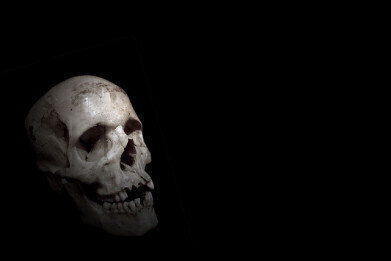News & Views
What Can Skeletons Teach Us About the Past?
Jan 19 2016
Despite the fact that their owners are long gone, skeletons can house centuries of secrets. The latest Scottish discovery is particularly intriguing, with experts musing that a skeleton found under an Edinburgh primary school could be that of a pirate.
The remains were found buried under a playground, which happens to lie near a former execution site. Given the close proximity, archaeologists believe that the bones could belong to a man who was hanged for piracy in the 16th or 17th century.
Council digs up mysterious remains
The site wasn’t initially on the radar of archaeologists, however council workers bought it to their attention when they uncovered bones during survey work for an extension at Edinburgh’s Victoria primary school. Experts from AOC Archaeology were quick to arrive on the scene, with forensic artist Hayley Fisher helping to create a facial reconstruction of the man.
Today the site operates as a primary school, however over 600 years ago the area around Newhaven harbour was used as a dockyard, complete with a gallows block. It’s thought that the man may have been executed for piracy, then buried in a shallow grave. After studying the bones archaeologists have also revealed that after the man was hung he was put on display as a warning to other buccaneers.
Edinburgh delights in gruesome history
Despite the sombre theme, the city of Edinburgh’s culture convener Councillor Richard Lewis sees it as a fascinating glimpse into ‘Auld Reekie’s’ past.
“Edinburgh had an undeniably intriguing past and some of our archaeological discoveries have been in the strangest of places. It’s fantastic that through the council’s archaeology and museums service, we are able to investigate such discoveries and add to our understanding of Newhaven’s heritage,” he states.
Laura Thompson, headmistress at Victoria primary school was also positive, commenting that “The pupils think it’s fantastic that a skeleton was found deep underneath their playground. The archaeologists will hold a special lesson with some of the children about how they have used science to analyse the remains, and it will be a good learning opportunity for them.”
DNA plays an integral role in tracing remains, with the UK Fingerprint Bureau dating back to 1901. ‘DNA: its Place in the Criminal Justice System’ looks at the use of DNA profiling in more detail, and how it contributes to the Criminal Justice system. As well as being a fundamental part of the presentation of evidence in criminal trials, DNA is also used in a myriad of other applications.
Image via Flickr Creative Commons. Photo credits: Ben Francis
Digital Edition
LMUK 49.7 Nov 2024
November 2024
News - Research & Events News - News & Views Articles - They’re burning the labs... Spotlight Features - Incubators, Freezers & Cooling Equipment - Pumps, Valves & Liquid Hand...
View all digital editions
Events
Nov 18 2024 Shanghai, China
Nov 20 2024 Karachi, Pakistan
Nov 27 2024 Istanbul, Turkey
Jan 22 2025 Tokyo, Japan
Jan 22 2025 Birmingham, UK




.jpg)














